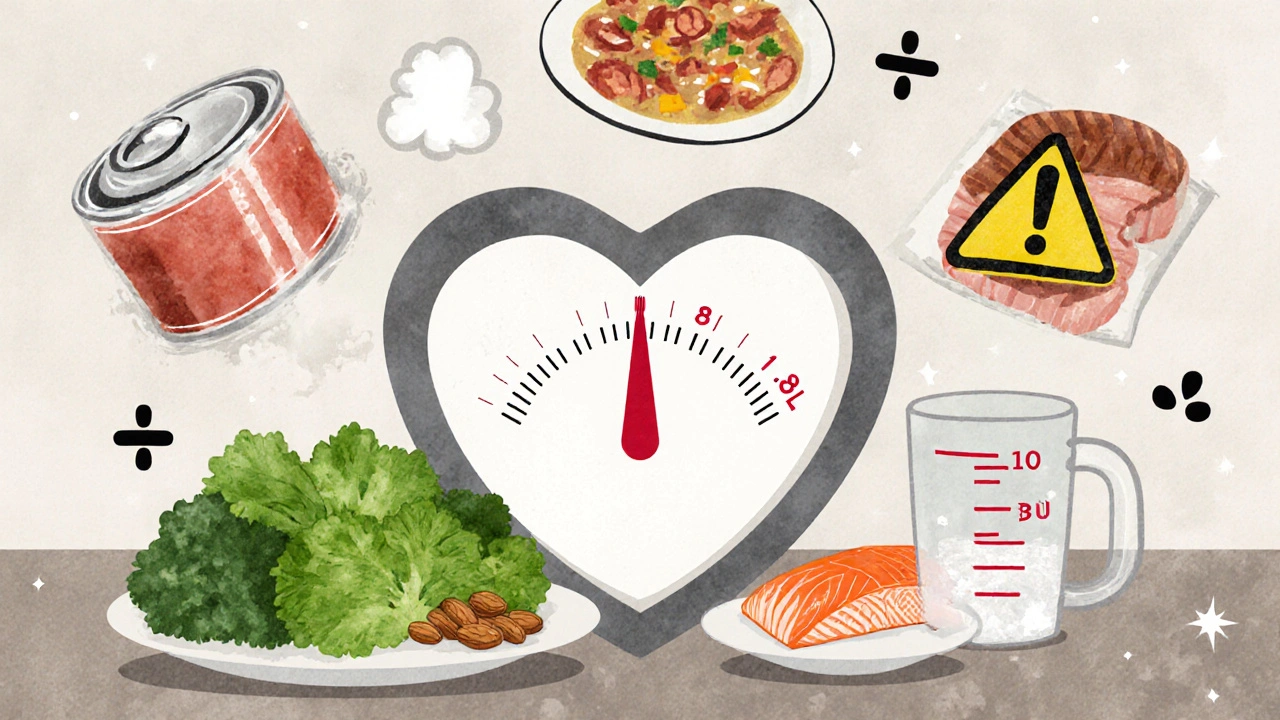Fluid Restriction for Heart Failure: What You Need to Know
When your heart can’t pump blood well, fluid builds up in your body—that’s fluid restriction for heart failure, a common medical recommendation to reduce swelling and ease breathing by limiting how much liquid you drink and eat. It’s not about cutting water out completely—it’s about finding the right balance so your heart doesn’t get overwhelmed. This isn’t just a suggestion; it’s often a key part of treatment, especially when combined with diuretics, medications that help your kidneys flush out extra fluid and sodium intake, the amount of salt in your diet, which directly affects how much water your body holds onto.
Most people with heart failure are told to limit fluids to 1.5 to 2 liters a day—roughly 6 to 8 cups. That includes water, coffee, soup, ice cream, even foods that melt into liquid at room temperature. Why? Because too much fluid makes your heart work harder, which can make you feel more tired, cause swelling in your legs or belly, and make it harder to breathe, especially when lying down. Reducing fluid doesn’t just help your heart—it can also make your diuretics work better. If you’re taking a water pill but still drinking a gallon of tea a day, you’re fighting a losing battle.
It’s not just about drinking less. Salt is the silent troublemaker here. High sodium makes your body hang on to water like a sponge. So even if you’re sticking to your fluid limit, eating salty chips, canned soup, or processed meals can undo all the progress. That’s why fluid restriction for heart failure almost always goes hand-in-hand with a low-sodium diet. You’ll also need to track your weight daily—sudden gains of 2 pounds or more in a day can mean fluid is building up before you even feel it.
Some people think cutting fluids means giving up all their favorite drinks, but it’s more about planning. Sip slowly. Use small cups. Freeze juice into ice cubes and suck on them when you’re thirsty. Rinse your mouth with water without swallowing. These small tricks make a big difference in sticking with it long-term. And if you’re on dialysis or have kidney issues, your limits might be tighter—always follow what your doctor or nurse tells you, not what you read online.
There’s no one-size-fits-all rule. Some folks need to cut back hard, others can be more flexible. What matters is working with your care team to find your personal sweet spot. The posts below show real-world examples: how people manage fluid limits while still eating well, how diuretics interact with other heart meds, and what happens when sodium sneaks in unnoticed. You’ll find practical tips, common mistakes, and what works when the daily struggle gets tough. This isn’t just about rules—it’s about feeling stronger, breathing easier, and staying in control.

